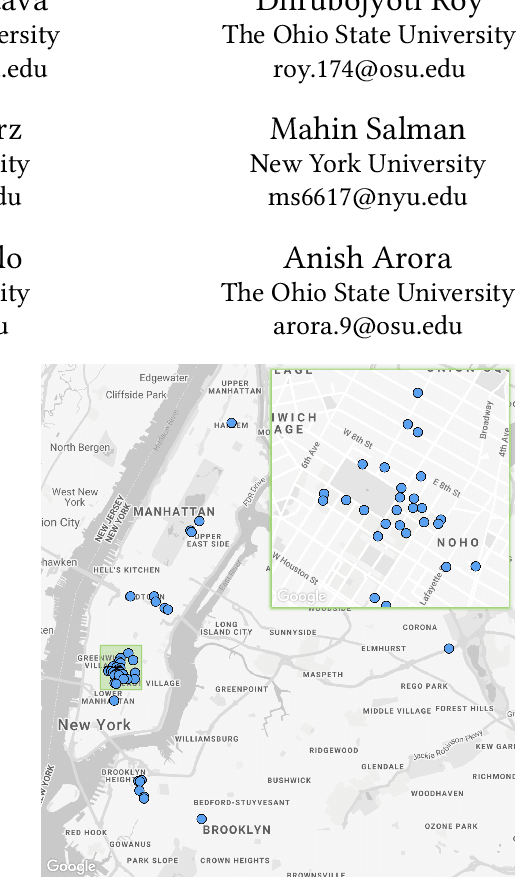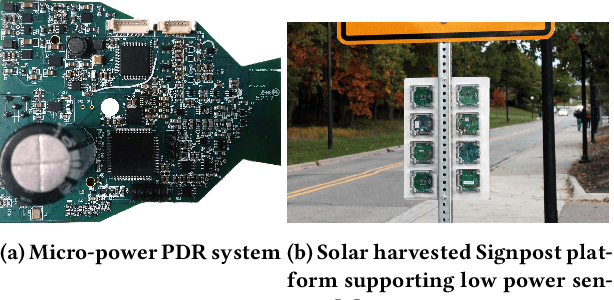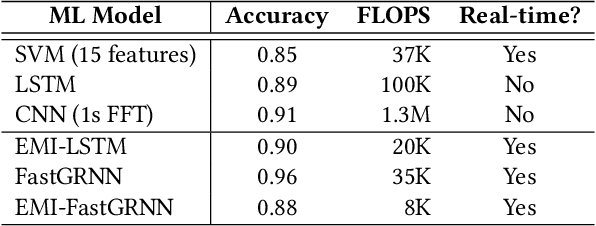Dhrubojyoti Roy
MUDAS: Mote-scale Unsupervised Domain Adaptation in Multi-label Sound Classification
Jun 12, 2025Abstract:Unsupervised Domain Adaptation (UDA) is essential for adapting machine learning models to new, unlabeled environments where data distribution shifts can degrade performance. Existing UDA algorithms are designed for single-label tasks and rely on significant computational resources, limiting their use in multi-label scenarios and in resource-constrained IoT devices. Overcoming these limitations is particularly challenging in contexts such as urban sound classification, where overlapping sounds and varying acoustics require robust, adaptive multi-label capabilities on low-power, on-device systems. To address these limitations, we introduce Mote-scale Unsupervised Domain Adaptation for Sounds (MUDAS), a UDA framework developed for multi-label sound classification in resource-constrained IoT settings. MUDAS efficiently adapts models by selectively retraining the classifier in situ using high-confidence data, minimizing computational and memory requirements to suit on-device deployment. Additionally, MUDAS incorporates class-specific adaptive thresholds to generate reliable pseudo-labels and applies diversity regularization to improve multi-label classification accuracy. In evaluations on the SONYC Urban Sound Tagging (SONYC-UST) dataset recorded at various New York City locations, MUDAS demonstrates notable improvements in classification accuracy over existing UDA algorithms, achieving good performance in a resource-constrained IoT setting.
Infrastructure-free, Deep Learned Urban Noise Monitoring at $\sim$100mW
Mar 11, 2022



Abstract:The Sounds of New York City (SONYC) wireless sensor network (WSN) has been fielded in Manhattan and Brooklyn over the past five years, as part of a larger human-in-the-loop cyber-physical control system for monitoring, analyzing, and mitigating urban noise pollution. We describe the evolution of the 2-tier SONYC WSN from an acoustic data collection fabric into a 3-tier in situ noise complaint monitoring WSN, and its current evaluation. The added tier consists of long-range (LoRa), multi-hop networks of a new low-power acoustic mote, MKII ("Mach 2"), that we have designed and fabricated. MKII motes are notable in three ways: First, they advance machine learning capability at mote-scale in this application domain by introducing a real-time Convolutional Neural Network (CNN) based embedding model that is competitive with alternatives while also requiring 10$\times$ lesser training data and $\sim$2 orders of magnitude fewer runtime resources. Second, they are conveniently deployed relatively far from higher-tier base station nodes without assuming power or network infrastructure support at operationally relevant sites (such as construction zones), yielding a relatively low-cost solution. And third, their networking is frequency agile, unlike conventional LoRa networks: it tolerates in a distributed, self-stabilizing way the variable external interference and link fading in the cluttered 902-928MHz ISM band urban environment by dynamically choosing good frequencies using an efficient new method that combines passive and active measurements.
One Size Does Not Fit All: Multi-Scale, Cascaded RNNs for Radar Classification
Sep 06, 2019



Abstract:Edge sensing with micro-power pulse-Doppler radars is an emergent domain in monitoring and surveillance with several smart city applications. Existing solutions for the clutter versus multi-source radar classification task are limited in terms of either accuracy or efficiency, and in some cases, struggle with a trade-off between false alarms and recall of sources. We find that this problem can be resolved by learning the classifier across multiple time-scales. We propose a multi-scale, cascaded recurrent neural network architecture, MSC-RNN, comprised of an efficient multi-instance learning (MIL) Recurrent Neural Network (RNN) for clutter discrimination at a lower tier, and a more complex RNN classifier for source classification at the upper tier. By controlling the invocation of the upper RNN with the help of the lower tier conditionally, MSC-RNN achieves an overall accuracy of 0.972. Our approach holistically improves the accuracy and per-class recalls over ML models suitable for radar inferencing. Notably, we outperform cross-domain handcrafted feature engineering with time-domain deep feature learning, while also being up to $\sim$3$\times$ more efficient than a competitive solution.
 Add to Chrome
Add to Chrome Add to Firefox
Add to Firefox Add to Edge
Add to Edge